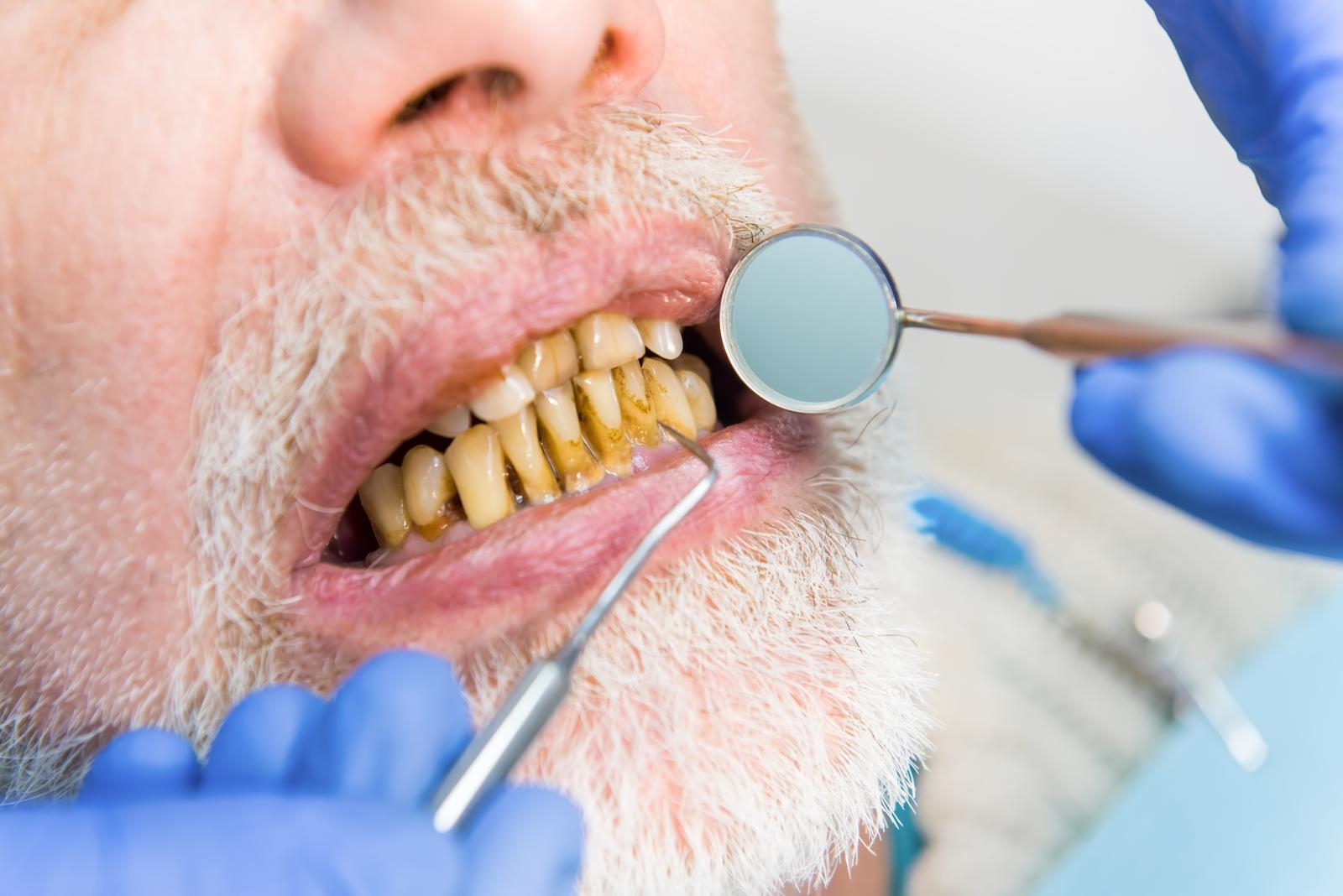Congratulations! You’ve made it this far in life with your teeth mostly intact. That’s a feat to be proud of, and you’re doing a great job taking care of your smile. But even with the best brushing, flossing, and dental habits, tooth decay can still sneak up on you.
What causes tooth decay, and how do you know if you have it? What are the best treatments for cavities and decayed teeth? You’ve got questions, and we’ve got answers. In this article, we’ll explore the ins and outs of tooth decay, dispel common myths, and give you the information you need to keep smiling confidently.
Understanding Tooth Decay: An Overview
Tooth decay, also known as dental caries or cavities, is a common dental problem that occurs when the outer layer of your tooth, called the enamel, is damaged by bacterial acid. Tooth decay can affect people of all ages and can lead to serious dental problems if left untreated. It is essential to understand what tooth decay is, how it occurs, and the impact it has on your dental health.
The process of tooth decay begins when bacteria in your mouth feed on the sugars from the foods and drinks that you consume. These bacteria produce acid that attacks the enamel, causing it to weaken and eventually break down. Over time, the decay can progress deeper into the tooth’s layers, causing pain, sensitivity, and even tooth loss.
Causes of Tooth Decay: What You Need to Know
Several factors can contribute to tooth decay, including poor oral hygiene, bacterial acid, and sugary foods and drinks. Poor oral hygiene, including neglecting to brush and floss regularly, can lead to a buildup of bacteria in the mouth. As bacteria feed on the sugars and starches left behind by food and drink, they produce acid that can harm the tooth enamel.
Consuming sugary foods and drinks, such as candy, soda, and juice, can also contribute to tooth decay. These foods and drinks feed the bacteria that produce acid, leading to rapid enamel breakdown. Drinking sugary drinks throughout the day or sipping on them for long periods can increase the risk of tooth decay. It is essential to limit your intake of sugary foods and drinks and to brush and floss regularly to remove any remaining sugars or starches.
Other factors that can contribute to tooth decay include dry mouth, acid reflux, smoking, and certain medications. Additionally, individuals with braces or dental restorations, such as fillings or crowns, may be more prone to tooth decay as these devices can make it difficult to brush and floss properly.
Symptoms of Tooth Decay: Recognizing the Signs
Unfortunately, tooth decay often does not cause any pain or symptoms in its early stages, which is why regular check-ups with your dentist are crucial. However, as decay progresses, you may begin to notice some changes in your teeth. One common symptom is tooth sensitivity, especially to hot or cold liquids or foods. You may also notice discoloration or dark spots on your teeth, which can indicate decay has already reached the dentin layer.
Another symptom to look out for is pain when biting or chewing, especially if it is localized to a specific tooth. You may also experience bad breath or a bad taste in your mouth, which can be a sign of an infection caused by tooth decay. Finally, if you notice any visible holes or pits in your teeth, you should see your dentist immediately as this is a sign of advanced decay.
Types of Tooth Decay You Should be Aware of
There are several types of tooth decay, each with their own unique characteristics. Pit and fissure decay, as the name implies, occurs in the tiny pits and grooves on the biting surfaces of your teeth. This type of decay is common in children and can be prevented by applying sealants to the teeth.
Root decay, on the other hand, is more common in older adults and occurs on the root surfaces of the teeth. This type of decay is often caused by receding gums, which expose the softer root surface to bacteria and decay.
Finally, smooth-surface decay occurs on the flat surfaces of your teeth and can be caused by poor oral hygiene and a buildup of plaque. This type of decay can be prevented by regular brushing and flossing, as well as regular dental cleanings.
Preventing Tooth Decay: Tips for a Healthy Smile
Preventing tooth decay is the best way to maintain a healthy smile. Here are some tips to help you keep your teeth strong:
- Brush at least twice a day with a fluoride toothpaste.
- Floss daily to remove plaque and food particles that your toothbrush can’t reach.
- Eat a healthy diet rich in fruits, vegetables, and whole grains. Avoid sugary and acidic foods and drinks as much as possible.
- Drink plenty of water and limit your intake of sugary drinks.
- Visit your dentist regularly for routine cleanings and exams.
By following these simple steps, you can reduce your risk of tooth decay and protect your oral health.
Diagnosing Tooth Decay: What to Expect
If you suspect you have a cavity or other form of tooth decay, your dentist will perform a thorough examination to diagnose the problem. Here’s what you can expect during your dental visit:
Visual Examination
Your dentist will visually inspect your teeth and gums for signs of decay, such as dark spots, staining, and soft or sensitive spots. They may also use dental tools to gently probe between your teeth and along your gum line to test for soft spots or other signs of decay.
X-Rays
If your dentist suspects you have a cavity, they may need to take an X-ray of your teeth to confirm the diagnosis. X-rays can help identify the location and severity of tooth decay that may not be visible during a visual examination.
If your dentist does diagnose you with tooth decay, they will discuss treatment options with you, which may include fillings, crowns, or other restorative procedures. It’s important to address tooth decay as soon as possible to prevent further damage and maintain optimal oral health.
Treating Tooth Decay: Understanding Your Options
If left untreated, tooth decay can lead to severe pain, infection, and tooth loss. Fortunately, there are several options for treating tooth decay, depending on the severity of the decay and your individual needs. The most common treatment options for tooth decay include fillings, root canals, and extractions.
If the decay is caught early enough, a dental filling may be all that is needed. With this procedure, the decayed portion of the tooth is removed and replaced with a filling material, such as composite resin or amalgam. Dental fillings are a quick and straightforward treatment option that can be completed in a single visit to your dentist.
However, if the decay has reached the pulp of the tooth, a root canal may be necessary. During a root canal procedure, the affected tooth is thoroughly cleaned and the damaged nerve and pulp are removed. The remaining space is then filled, and the tooth is typically crowned for added protection.
In some cases, tooth decay may be so severe that extraction is the only option. This is usually a last resort option if the decay has caused irreversible damage to the tooth. Fortunately, dental implants, bridges, and dentures are all options for replacing missing teeth.
Dental Fillings: What You Need to Know
Dental fillings are a common treatment option for tooth decay. They are used to fill cavities and prevent further damage to the tooth. There are several types of fillings to choose from, including composite resin, amalgam, gold, and porcelain. Your dentist can help you choose the best option for your individual needs.
The procedure for placing a dental filling is straightforward and can usually be completed in a single visit. Your dentist will first numb the area around the affected tooth to minimize any discomfort. The decayed portion of the tooth is then removed, and the cavity is cleaned and filled with the chosen material. The filling is then polished to ensure a smooth surface.
After receiving a dental filling, it is important to practice good oral hygiene to prevent further decay. This includes brushing twice a day, flossing once a day, and visiting your dentist regularly for check-ups and cleanings. While dental fillings can last for many years, they may need to be replaced over time. Your dentist will monitor your fillings during your routine check-ups and let you know if any need to be replaced.
Root Canal Therapy: An Overview
Root canal therapy is a dental procedure that involves removing the infected or damaged pulp from inside a tooth. The pulp is a soft tissue that contains nerves and blood vessels, and it becomes damaged when tooth decay reaches the innermost part of the tooth. When this happens, a root canal procedure may be necessary to save the tooth and prevent further decay.
During the procedure, the dentist will create a tiny hole in the top of the tooth and remove the damaged pulp using special tools. The area will then be cleaned and disinfected before being filled with a material to protect the tooth from further decay. Finally, the tooth will be sealed with a filling or a crown to further protect it.
Root canal therapy is generally performed under local anesthesia, which means you will be awake during the procedure but will not feel any pain. Most people who have had a root canal procedure describe it as being similar in discomfort level to having a filling done. Once the procedure is complete, you may experience some mild discomfort and sensitivity for a few days, but this should subside quickly.
Extractions: When Tooth Removal is Necessary
There are several reasons why tooth extraction may be necessary. The most common reasons include severe decay or damage, impacted wisdom teeth, overcrowding, and infection. Sometimes, a dentist may recommend extraction as part of a treatment plan for braces or other orthodontic procedures.
During an extraction procedure, the dentist will use numbing medication to ensure that you do not experience any pain. They will then use specialized tools to loosen the tooth and remove it from its socket. In some cases, stitches may be required to close the extraction site, but this is not always necessary.
After the procedure, you will likely experience some swelling, bleeding, and discomfort around the extraction site. Your dentist will provide you with instructions on how to care for the area and manage any pain or discomfort. In most cases, you can expect to recover within a week or two.
It is important to follow your dentist’s instructions closely after a tooth extraction to ensure proper healing and to reduce the risk of complications. With proper care, extractions can be a safe and effective way to treat a variety of dental issues.
Caring for Your Teeth After Treatment
Now that you’ve successfully undergone treatment for tooth decay, it’s essential to take the necessary steps to maintain good oral health. Brushing twice a day with fluoride toothpaste, flossing daily, and using an antibacterial mouthwash can help to keep your teeth and gums healthy. It’s also a good idea to schedule regular check-ups with your dentist to detect any potential issues before they become bigger problems.
Additionally, it’s essential to watch what you eat and drink. Sugary snacks and drinks can contribute to tooth decay, so it’s best to avoid them altogether or consume them in moderation. Instead, opt for foods that are high in calcium, like dairy products, which can help to strengthen your teeth.
Lastly, don’t forget to replace your toothbrush every 3-4 months or sooner if the bristles become frayed. Bacteria can accumulate on your toothbrush over time, leading to more oral health issues.
When to See a Dentist: Taking Action Against Tooth Decay
Even with good oral hygiene, tooth decay can still occur. It’s essential to recognize the signs and symptoms of tooth decay and seek prompt treatment from your dentist. Some common symptoms of tooth decay include sensitivity to hot and cold temperatures, visible holes or pits in your teeth, and persistent bad breath.
If you experience any of these symptoms, it’s crucial to schedule an appointment with your dentist right away. They can evaluate the extent of the decay and recommend treatment options, such as fillings or root canals.
Preventing Tooth Decay in the Future
Preventing tooth decay is much easier and less expensive than treating it. Here are some simple steps you can take to prevent tooth decay in the future:
- Brush twice a day: Brushing twice a day with fluoride toothpaste can help remove plaque and prevent tooth decay.
- Floss daily: Flossing helps to remove food particles and plaque from between your teeth.
- Limit sugary foods: Sugary foods can lead to tooth decay, so it’s essential to limit your intake or avoid them altogether.
- Drink plenty of water: Water helps to wash away food particles and bacteria from your teeth.
- Visit your dentist regularly: Regular check-ups and cleanings can help detect and prevent tooth decay.
By following these simple tips, you can reduce your risk of tooth decay and maintain good oral health for years to come.
Conclusion
Now that you know the common causes, symptoms, and treatments for tooth decay, it’s important to take care of your oral health regularly. Remember to maintain a balanced diet, brush and floss daily, and visit your dentist at least twice a year for routine check-ups and cleanings. If you experience any signs of tooth decay, seek professional help immediately before it worsens. With proper oral hygiene and early intervention, you can prevent tooth decay and maintain a healthy, vibrant smile.






